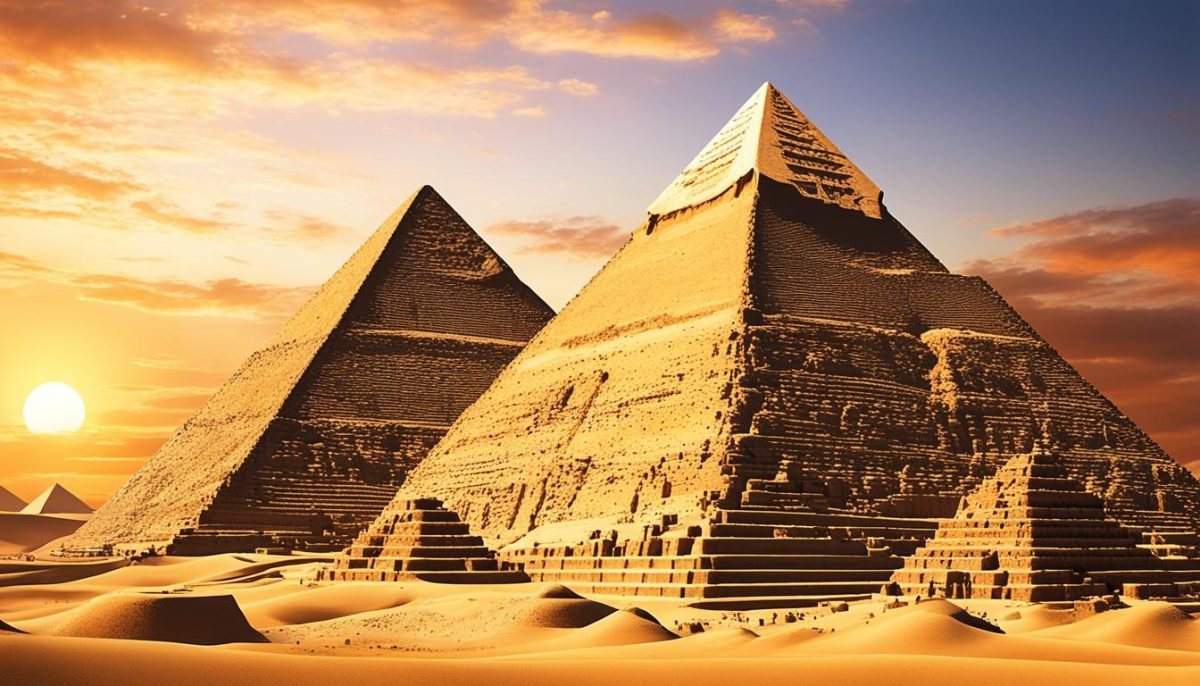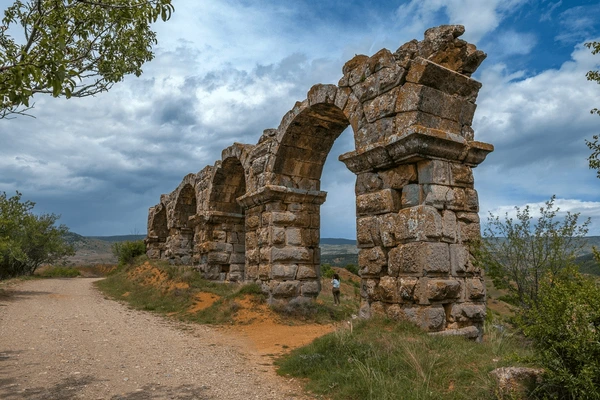Egypt, often referred to as the cradle of civilization, is a land where history comes alive. From the towering pyramids to the majestic temples, Egypt’s historical sites offer a fascinating glimpse into one of the world’s oldest and most influential cultures. Here’s a guide to some of the most remarkable historical places in Egypt, including some wonders from the city of Alexandria, that every history enthusiast should visit.
1. The Pyramids of Giza
History and Significance:
The Pyramids of Giza, located on the outskirts of Cairo, are among the most iconic structures in the world. Built over 4,500 years ago, these monumental tombs were constructed for the pharaohs Khufu, Khafre, and Menkaure. The Great Pyramid of Khufu is the largest of the three and one of the Seven Wonders of the Ancient World.
What to See:
- The Great Pyramid of Khufu, the only surviving wonder of the ancient world.
- The Pyramid of Khafre, with its well-preserved mortuary temple.
- The enigmatic Sphinx, guarding the pyramids with its lion’s body and human head.

2. The Temples of Karnak
History and Significance:
The Karnak Temple complex, located in Luxor, is one of the largest religious building complexes in the world. It was built over a period of 2,000 years, with contributions from various pharaohs. The temple is dedicated to Amun-Ra, the chief deity of the Egyptian pantheon.
What to See:
- The Great Hypostyle Hall, with its 134 massive columns.
- The Sacred Lake, used for religious rituals.
- The Avenue of Sphinxes, a grand entrance to the temple complex.

3. The Valley of the Kings
History and Significance:
Situated on the west bank of the Nile near Luxor, the Valley of the Kings served as the burial ground for the pharaohs of the New Kingdom. This necropolis is home to over 60 tombs, including that of the famous Tutankhamun.
What to See:
- The Tomb of Tutankhamun, discovered by Howard Carter in 1922.
- The Tomb of Ramses VI, with its intricate wall carvings and astronomical ceiling.
- The Tomb of Seti I, one of the longest and most beautifully decorated tombs in the valley.

4. The Temple of Hatshepsut
History and Significance:
The Temple of Hatshepsut, located in Deir el-Bahari near Luxor, is a mortuary temple dedicated to Queen Hatshepsut, one of Egypt’s few female pharaohs. The temple’s unique design and beautiful terraces make it one of the most impressive structures in Egypt.
What to See:
- The Colonnaded Terraces, offering stunning views of the surrounding desert and mountains.
- The Chapels of Hathor and Anubis, dedicated to the gods of fertility and the afterlife.
- The Sanctuary of Amun, located deep within the temple.

5. The Abu Simbel Temples
History and Significance:
The Abu Simbel Temples, located near the Sudanese border, were built by Ramses II to commemorate his victories and honor the gods Amun, Ra-Horakhty, and Ptah. These rock-cut temples were relocated in the 1960s to save them from the rising waters of the Aswan High Dam.
What to See:
- The Great Temple, featuring colossal statues of Ramses II.
- The Small Temple, dedicated to Ramses’ wife, Queen Nefertari.
- The remarkable solar alignment, where twice a year, the sun illuminates the inner sanctum of the Great Temple.

6. The Egyptian Museum in Cairo
History and Significance:
The Egyptian Museum in Cairo houses the world’s most extensive collection of ancient Egyptian artifacts. Founded in 1902, the museum’s collection includes treasures from the tomb of Tutankhamun, royal mummies, and a vast array of statues, jewelry, and pottery.
What to See:
- The Tutankhamun Gallery, featuring the pharaoh’s golden mask and burial treasures.
- The Royal Mummy Room, displaying the mummies of some of Egypt’s most famous pharaohs.
- The extensive collection of papyrus and ancient coins.

7. The Temple of Philae
History and Significance:
Located on Agilkia Island near Aswan, the Temple of Philae is dedicated to the goddess Isis. The temple complex was relocated in the 1960s to protect it from the waters of the Aswan High Dam.
What to See:
- The Temple of Isis, the main attraction with its stunning pylons and courtyards.
- The Trajan’s Kiosk, a small but beautifully preserved pavilion.
- The nightly sound and light show, bringing the temple’s history to life.

8. The Catacombs of Kom El Shoqafa (Alexandria)
History and Significance:
The Catacombs of Kom El Shoqafa in Alexandria are considered one of the Seven Wonders of the Middle Ages. These underground tombs, dating back to the 2nd century AD, blend Egyptian, Greek, and Roman architectural styles, reflecting Alexandria’s diverse cultural heritage.
What to See:
- The impressive multi-level tomb structure.
- The Hall of Caracalla, which contains the remains of horses and humans.
- The striking mixture of sculptures and inscriptions from different cultures.

9. The Citadel of Qaitbay (Alexandria)
History and Significance:
The Citadel of Qaitbay, built in the 15th century by Sultan Qaitbay, stands on the site of the ancient Lighthouse of Alexandria, one of the Seven Wonders of the Ancient World. This fortress protected Alexandria from invaders and now offers stunning views of the Mediterranean Sea.
What to See:
- The robust defensive architecture of the fortress.
- The scenic views of the Mediterranean coastline.
- The small museum inside, showcasing artifacts from Alexandria’s maritime history.

10. The Bibliotheca Alexandrina (Alexandria)
History and Significance:
The modern Bibliotheca Alexandrina is a tribute to the ancient Library of Alexandria, one of the most famous libraries of antiquity. Opened in 2002, the new library is a center of learning and culture, housing millions of books and hosting various exhibitions and conferences.
What to See:
- The library’s unique circular design and impressive architecture.
- The vast collection of books, manuscripts, and digital archives.
- The various museums and galleries within the complex, including the Antiquities Museum and the Manuscript Museum.

Conclusion
Egypt’s historical sites offer a journey through time, revealing the grandeur and mystery of an ancient civilization that has captivated the world for millennia. From the awe-inspiring pyramids and temples of Luxor to the captivating wonders of Alexandria, each site tells a story of power, faith, and ingenuity. Visiting these historical places in Egypt is not just a trip; it’s an immersion into the timeless wonders of human achievement. So pack your bags and get ready to embark on an unforgettable adventure through the land of the pharaohs!
4o


